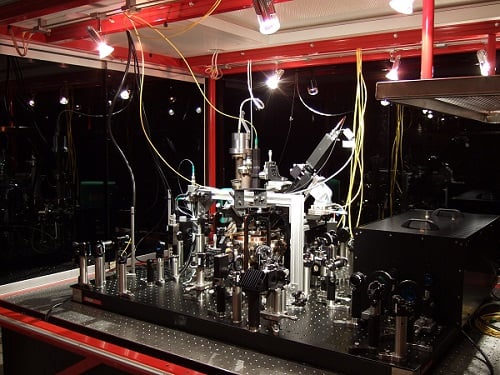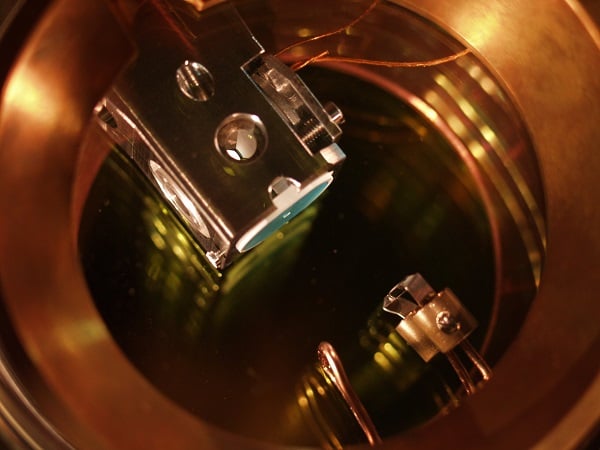Physicists at the Max Planck Institute of Quantum Optics developed a method that could facilitate the construction of powerful and robust quantum computers, as well as the secure transmission of data. The physicists generated up to 14 entangled photons, in an optical resonator, which could be prepared into specific quantum physical states in a targeted and efficient manner.
To use a quantum computer profitably, a large number of entangled particles must work together, as qubits in the quantum system. Until now, the entanglement of photons usually took place in special, nonlinear crystals. The shortcoming with this method is that the photons are essentially created randomly and in a way that cannot be controlled. This also limits the number of particles that can be bundled into a collective state.
The newly developed method allowed basically any number of entangled photons to be generated, the researchers said.
According to Philip Thomas, a doctoral student at the Max Planck Institute of Quantum Optics, to the best of the scientists’ knowledge, the 14 interconnected light particles are the largest number of entangled photons that have been generated in a laboratory. Photons are well suited for entanglement because they are robust by nature and easy to manipulate, he said.
The research team used a single atom to emit the photons and interweave them in a specific way. To do this, the researchers placed a rubidium atom at the center of an optical cavity. With laser light of a specific frequency, the state of the atom could be precisely addressed. Using an additional control pulse, the researchers also specifically triggered the emission of a photon that is entangled with the quantum state of the atom.

Setup of an optical resonator in a vacuum. A single rubidium atom is trapped between the conically shaped mirrors inside the holder. Courtesy of MPQ.
“We repeated this process several times and in a previously determined manner,” Thomas said. In between, the atom was rotated. In this way, it was possible to create a chain of up to 14 photons that were entangled with each other by the atomic rotations and brought into a desired state.
More than the quantity of the entangled photons marking a major step toward the development of powerful quantum computers is the importance of the way that they were generated, which was also very different from conventional methods. "Because the chain of photons emerged from a single atom, it could be produced in a deterministic way,” Thomas said. This means that, in principle, each control pulse actually delivered a photon with the desired properties.

Experimental setup with vacuum chamber on an optical table. Courtesy of MPQ.
Additionally, the method is efficient — another important measure for potential future technical applications. “By measuring the photon chain produced, we were able to prove an efficiency of almost 50%,” Thomas said. This means that almost every second “push of a button” on the rubidium atom delivered a usable light particle — far more than has been achieved in previous experiments.
“All in all, our work removes a longstanding obstacle on the path to scalable, measurement-based quantum computing,” said Gerhard Rempe, director at the Max Planck Institute of Quantum Optics.

Setup of an optical resonator in a vacuum. A single rubidium atom is trapped between the conically shaped mirrors inside the holder. Courtesy of MPQ.
The scientists want to remove another hurdle. Complex computing operations for instance would require at least two atoms as photon sources in the resonator. The quantum physicists speak of a two-dimensional cluster state. “We are already working on tackling this task,” Thomas said.
He said that possible technical applications extend beyond quantum computing. “Another application example is quantum communication,” he said.
For example, using the method, quantum information could be packaged in entangled photons and could also survive a certain amount of light loss, and enable secure communication over greater distances.
The research was published in Nature (www.doi.org/10.1038/s41586-022-04987-5).